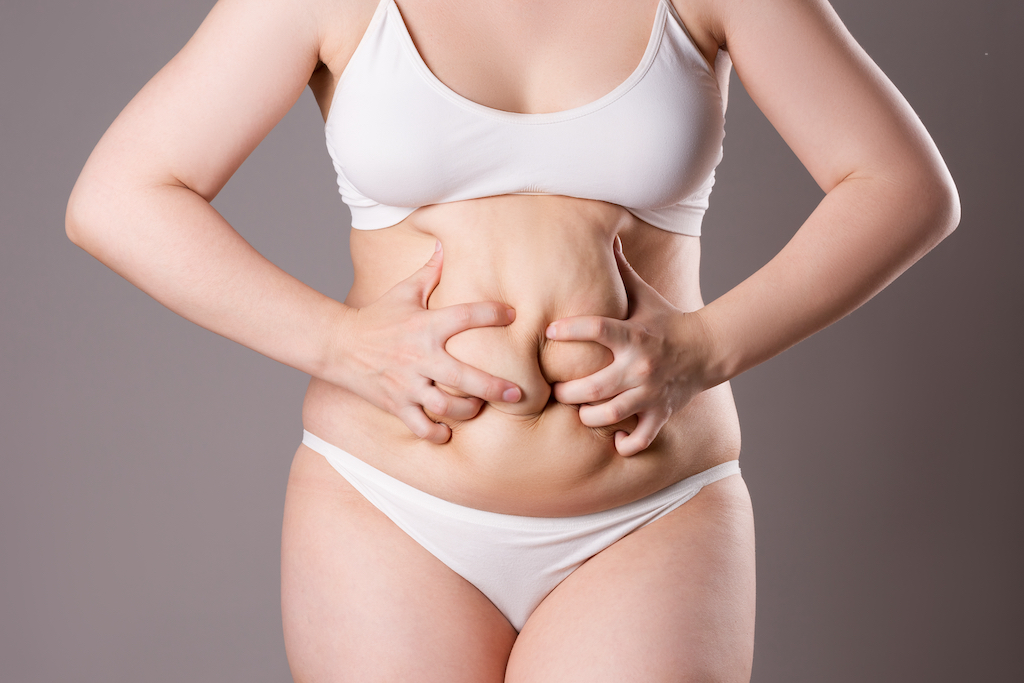 Photo Credit: ShutterstockAre you considering plastic surgery – maybe liposuction or a tummy tuck – to achieve your desired body shape? Haute Beauty expert and board-certified cosmetic surgeon, Dr. Alton Ingram understands that people have different motivations for wanting to improve their physical appearance. Some may want to address loose skin and fatty tissues in their midsection after weight loss or childbirth, while others may simply want to remove stubborn fat from their abdomen, flanks, thighs, or other areas. Regardless of your motivation, it’s important to understand the differences between two common procedures: liposuction and tummy tuck, also known as abdominoplasty.
Photo Credit: ShutterstockAre you considering plastic surgery – maybe liposuction or a tummy tuck – to achieve your desired body shape? Haute Beauty expert and board-certified cosmetic surgeon, Dr. Alton Ingram understands that people have different motivations for wanting to improve their physical appearance. Some may want to address loose skin and fatty tissues in their midsection after weight loss or childbirth, while others may simply want to remove stubborn fat from their abdomen, flanks, thighs, or other areas. Regardless of your motivation, it’s important to understand the differences between two common procedures: liposuction and tummy tuck, also known as abdominoplasty.
Liposuction VS Tummy Tuck
Liposuction and a tummy tuck are both cosmetic surgeries that can help you achieve a flatter and firmer midsection or profile. However, they differ in terms of their purpose, procedure, recovery, results, and complications.
PURPOSE
Liposuction is a less invasive procedure that is designed to remove localized fat from different parts of the body, including the stomach, flanks, thighs, hips, buttocks, calves, arms, chin, and neck, with the aim of improving body shape and contour. However, liposuction doesn’t address loose skin that can result from aging or after pregnancy. On the other hand, a tummy tuck targets the protruded abdominal area, removing excess fat and fatty tissues as well as saggy skin from the stomach. This procedure also tightens midsection muscles, something that cannot be achieved through liposuction alone. In some cases, a tummy tuck can even give you a narrower waistline.
PROCEDURE
The procedural differences between liposuction and tummy tuck are notable. Liposuction is generally performed under local anesthesia through small incisions, while tummy tuck usually requires general anesthesia, and the surgeon makes an incision from hip to hip and around the belly button if necessary. During liposuction surgery, fat is suctioned out of the body using a cannula. In contrast, a tummy tuck involves making an opening in the lower abdomen through which excess fat and skin are extracted.
 Photo Credit: Courtesy of Dr. Alton Ingram
Photo Credit: Courtesy of Dr. Alton Ingram
RECOVERY
The initial recovery period for liposuction is shorter and less complex than that of a tummy tuck. After liposuction, you can usually return to work in 2-3 days and should avoid strenuous activities for up to 2 weeks. During the recovery period, you may experience bruising, swelling, and minimal pain or bleeding, which will usually go away by the end of the second week. In contrast, tummy tuck requires a longer recovery period, during which you may need to avoid working and other activities for up to 2 weeks. During this time, pain, soreness around the incision site, bruising, and swelling are common. Heavy lifting, strenuous activities, and sexual activity are not permitted for about 1 month or more after the surgery, and swelling may persist for several months up to 6 months following the procedure.
In contrast, tummy tuck procedures are more invasive and can give you more dramatic and long-lasting results than liposuction. A tummy tuck, also known as abdominoplasty, is a plastic surgery procedure that offers several benefits. A tummy tuck removes excess skin and fat around the abdominal area, resulting in a flatter and more toned appearance. It can tighten your stomach muscles and restore skin elasticity. Abdominoplasty surgery will remove stretch marks and excess skin in your lower abdomen (below the belly button). A tummy tuck can improve your self-confidence and body image. This procedure can be performed on its own or as part of a mommy makeover, which can address multiple areas of concern in one surgery.
RISKS AND COMPLICATIONS
Like any surgery, both liposuction and tummy tuck carry risks and potential complications, which are usually rare and temporary. Possible complications of a tummy tuck include reactions to anesthesia, infection, poor wound healing, tissue necrosis, skin sensation alteration, seroma, and hematoma. In liposuction, the risks of reactions to anesthesia, infection, and seroma also exist. Other complications include irregular contouring, damage to surrounding tissues, and fat embolism, which are very rare but possible after any surgical procedure.
When determining whether liposuction or a tummy tuck is the right procedure for you, it is essential to consider the amount of loose skin present in your abdominal area. If there is a lot of loose skin, abdominoplasty likely will be your best option. On the other hand, if you have tight skin but bulks of fat in your abdomen, liposuction may be the more effective procedure. Ultimately, the best course of action is to discuss your expectations, goals, and needs with your doctor or contact my practice, Ingram Cosmetic Surgery, for a complimentary consultation.
For more information, visit Dr. Brian A. Levine's social media:

























